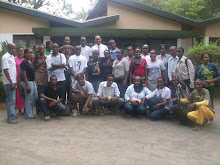Tanzania Economy has been substantially liberalized over the past 20 years following the beginning of the World Bank Supported adjustment programme in 1986.In particular Tanzania has reformed its investment and tax laws to attract foreign direct investment and a range of incentives is now offered to all foreign investors[1]. Following the reforms a number of foreign companies took the opportunity and invest in the Mining sector.
The giant foreign mining companies dominating the sector include the Canadian company, Barrick Gold Corporation operates three mines in Bulyanhulu, North Mara and Tulawaka and is developing a forth at Buzwagi. And; the South Africa AngloGold Ashanti (AGA) which operates the Geita mine, known to be the country largest gold deposit. Gold and diamond production has been the mainstay of mining production for Tanzania however, following trade liberalization in the 1990s; the mining industry has been growing rapidly. In the late 1998, the mining of gold has been the fastest growing sector of the economy after Tourism.
Tanzania is currently the third largest gold producer in Africa after South Africa and Ghana. The mining industry is fairly small in terms of value, nevertheless very significant since the sector earns a considerably large share of the export revenues for the country. Currently, the mining sector contributes around 2.3% to annual GDP; however, the government desires to expand the same to 10% by 2025[2]. According to mining experts, the country is endowed with one billion ounces of gold unexploited as yet[3]. Only four percent of Tanzania`s gold potential is being exploited despite the country being Africa's third largest producer. It is important to note that as per 2002 gold price, Tanzania is a fortune owner of up to US$39bn which is over three times the country’s annual GDP of US$11bn even though extraction costs are considered in this figure[4].
The Mining Act of 1998 prior the new Act of 2010 was the principal legislative framework that regulates application and grant of mineral rights as well as payments of taxes and royalties. The government obtains revenue from exploitation of minerals through taxes and royalties. On one hand, corporate tax is a form of taxation levied on company’s profit calculated from gross sales minus operating costs, capital charges, interest and depreciation, depletion allowances and any other deductibles. Generally, it ranges from 15-45% of net profits. It is payable in cash to the relevant inland or tax authorities. On the other hand, royalty is a sum of money paid to the government by a holder of a concession; it is a revenue based tax. A royalty can be paid on gross amount of revenue generated from minerals without any deductions on costs; it is paid regardless of profit from the undertaken project. Royalties contribute substantially to the income of the government.
Mining Companies pay taxes and royalties as indicated in the Income Tax Act, 2004 R.E.2006 and The Mining Act, 2010 and other relevant laws. However there are complaints from the public that the mining companies are not paying taxes as required, hence the government loses revenue. Reference is made to the income of these companies per year and the amount they pay. There are evidence that what the companies declare as their income per year is not realistic as they tend to submit less and declare loss recovery.
Tax payments by mining companies have been an issue as there are contradictory figures. Establishing precisely as how much the government is earning from gold is difficult since contradictory figures have been given by various sources. For example Figures provided by the Tanzanians Chamber of Mines indicate that the government received the revenue averaging
$ 28.4 million a year amounting to 10 percent of the value of exports. UN’s trade organization, UNCTAD, they all show that the government revenues from the mining are exceedingly low, ranging from $ 13m a year to a high US$ 36m a year. As a percentage of exports government revenue is actually less than 10 percent a year in all these estimates[5].There is a need to conduct a research to compromise the figures or to come out with the realistic figures by making reference to income of the company per year and taxes paid by looking the records and other sources.
“We hear that every day that there is no money for the development projects for building schools and dispensaries. Yet people hear of billions of shillings lost in tax revenue………How do we explain this to people who we tell there is no money for basic services”, John Cheyo, Chairman, Parliamentary Public Accounts Committee”[6]
Whom to believe when reference is made to the existing discrepancies. With existing figures, there are a lot of doughty; the implication is that the country is not benefiting from the mining sector especially with regards to revenue/taxes paid by the mining companies
Action is required to ascertain the issue of taxes paid by the mining companies. This will help to know whether the government is losing or benefiting from the mining sector. When reference is made to the existing figures the government loses a lot with regards to revenues from the mining industry.
By Baraka Saiteu Kiboya.
Tuesday, August 24, 2010
Subscribe to:
Post Comments (Atom)


No comments:
Post a Comment